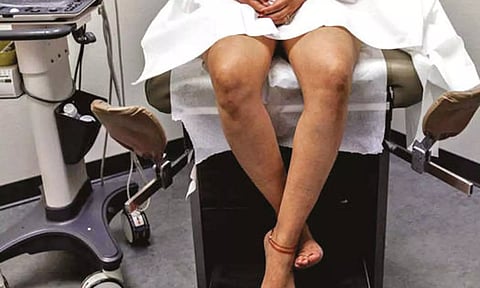

INES EISELE
The landmark Roe v. Wade ruling of 1973 gave pregnant people in the US the right to decide themselves whether to have an abortion up to the 24th week of pregnancy. But in June 2022, the Supreme Court, which since the presidency of Donald Trump has a conservative majority on the bench, overturned the decision. The highest court in the land gave back jurisdiction in this issue to the 50 federal states — a shock for all those who in principle are in favor of the right to abortion. And, according to surveys, those people make up a constant majority of Americans.
It’s true that even before this reversal, there had been a decades-long “culture war” as US states interpreted Roe v. Wade according to whether they had liberal or conservative governments, which led to a patchwork of different abortion rules. But the removal of the basic right to terminate a pregnancy has caused an even higher degree of polarization, and made it possible to introduce yet stricter restrictions on abortion, or absolute bans.
Nicole Huberfeld, a professor of health law at Boston University who is also co-director of a reproductive justice program there, said “the difference was that states always had to be mindful of the line of viability, the time at which a foetus would potentially be viable outside of the womb, outside of a pregnant person’s uterus. And if the state law outlawed abortion before 24 weeks, approximately, of pregnancy, then the federal court would say: ‘Well, this is a pre-viability law. We’re going to strike it down,’ and that law would have no effect.” She said this “guardrail” was really important, including for the legal security of doctors who carry out abortions. But, she added: “Now that guardrail does not exist anymore.”
The US Guttmacher Institute, which does a lot of research on the issue of abortion, has drawn up a map showing, in seven gradations, how restrictive or liberal the rules on abortion are in the individual states. Of the 50 in total, 13 are dark red and thus highly restrictive. In these states, abortions are more or less forbidden.
Conservative, highly religious states such as Texas, Tennessee and Mississippi already had strict rules for those with unwanted pregnancies and people providing the relevant medical services. They and the other states marked dark red on the map had prepared “trigger laws” — laws banning abortion that would automatically go into force if there were a new ruling at the federal level, which came in 2022. One person who knows from personal experience how difficult the additional hurdles to getting an abortion can be is Sarah King. In 2006, at the age of 17, she had an abortion in Alabama.
“The guy I had been seeing broke up with me, told me it wasn’t his baby,” she said. “It was a very difficult decision. Basically, I would have been stuck in the small town that I was in. I would end up having to give up my scholarships because I wouldn’t be able to start to study at university immediately.”
At the time, abortions were, in principle, still possible in Alabama. But there were still restrictions, such as requiring people to go to an abortion clinic first for information before coming back 24 hours later to have the procedure carried out — something that is no trivial matter when there are so few abortion clinics and people have to travel long distances to get to them. King said that at the time there were three clinics in the entire state, meaning that she spent the night at the clinic in Montgomery where she had the abortion done.
The complete bans on abortion in some states makes the problems caused by the lack of adequate medical care in parts of the US even worse, said Huberfeld.
This article was provided by Deutsche Welle